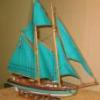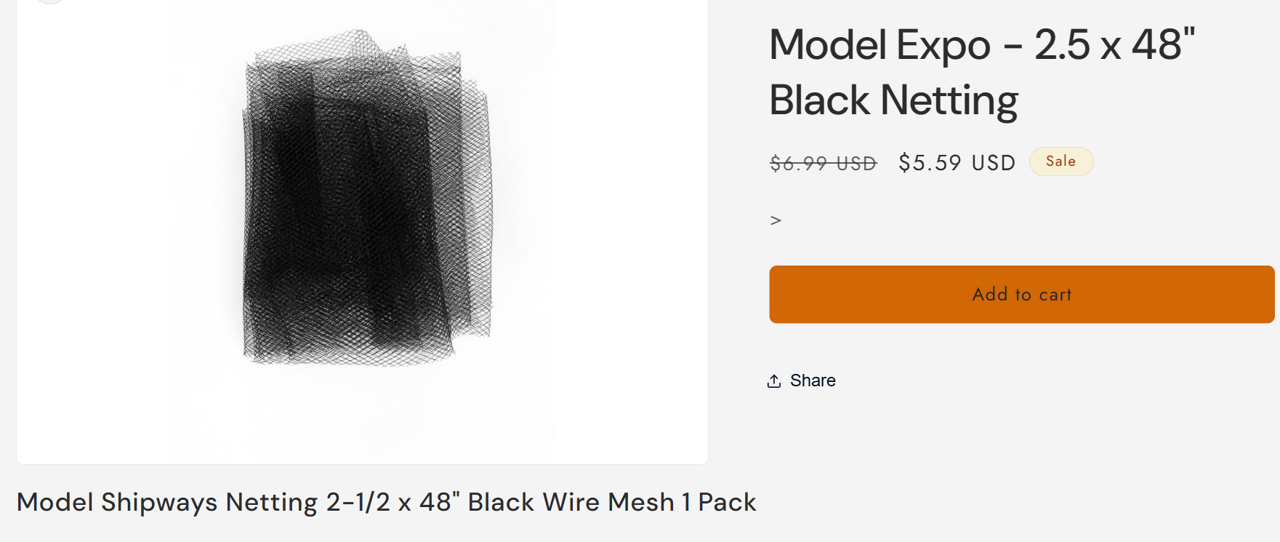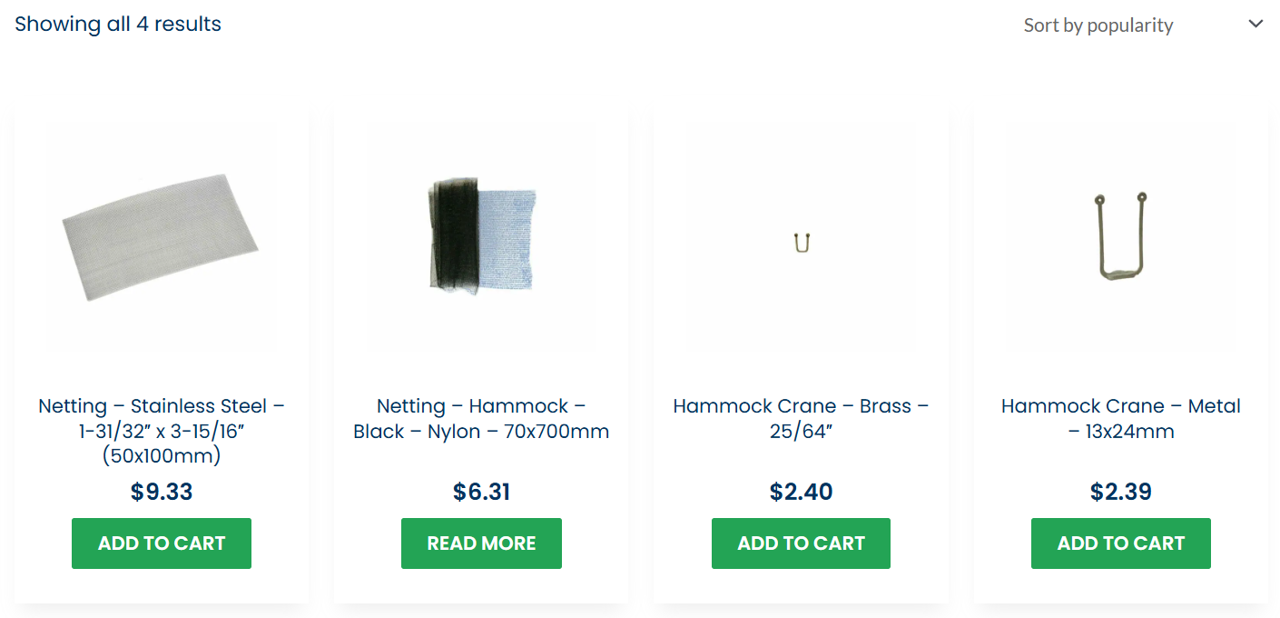-
Posts
2,619 -
Joined
-
Last visited
Content Type
Profiles
Forums
Gallery
Events
Everything posted by JSGerson
-

USS Constitution by mtbediz - 1:76
JSGerson replied to mtbediz's topic in - Build logs for subjects built 1751 - 1800
At first glance at your next to last photo, (post 985), you almost can't tell if you are looking at a model or the actual ship! Well done!!!! Jon -
Peter, other than installing a double linked chain (links with a cross bar) and a cable for two anchors on the gun deck, I haven't spent much time dealing with the anchors. Since my build is based mostly on the 2017 restoration, the last photo I found where the ship had an active anchor was from her tour to the west coast in the thirty's after her 1927 restoration. She sported a double linked chain and a rope cable for the anchors. Since the kit provided three anchors, I figured I'd store the third one on the spar deck. I haven't checked Ken's log for his anchor placement methods yet and probable won't until I get ready to install them. As I have mentioned before, I don't know how accurate my configuration is, but it does allow me to demonstrate the variations. At present, my anchor chain and cable hang anchorless and waiting. I am try not to add items they may get knocked off the model as it is being handled until necessary. I learned this lesson first with gun port covers being knocked off on my Rattlesnake, and second with the rope stanchions on the gun deck being knocked off for installing them too early. So, until I rig all the spar deck guns (and this is taking forever), add all the other furniture to the spar deck, and install the channels, among other things, the anchors will have to wait. Jon
-

USS Constitution by mtbediz - 1:76
JSGerson replied to mtbediz's topic in - Build logs for subjects built 1751 - 1800
Looking at the actual ship, you are right...of course! My eyesight is not what it use to be...and it was bad then too. I've been wearing glasses since I was seven and should have been wearing them sooner than that. That little detail my fabrication so much easier. Jon -

USS Constitution by mtbediz - 1:76
JSGerson replied to mtbediz's topic in - Build logs for subjects built 1751 - 1800
Beautifully done. I assume that since that channel eyebolt is not attached to anything other than the channel, can pull it off, open it up to accept the block double rings, and insert it back into the opening left in the channel? Or do you have a better alternative elegant plan to attached to that triple block to the channel eyebolt? Jon -

USS Constitution by mtbediz - 1:76
JSGerson replied to mtbediz's topic in - Build logs for subjects built 1751 - 1800
Very impressive, as always!! Jon -

Getting Started: From Dollhouses to the USS Constitution
JSGerson replied to Jasennord's topic in New member Introductions
Just stumbled onto this log and let me also welcome you the black hole of wooden ship model. Once you jump in, it is very hard to climb out. I have been working on my MSW Constitution since 2017 and still have a number of years to go. This is my 2nd fully rigged plank on bulkhead (POB) ship and my 3rd wooden model. My 1st was a solid hull Mamoli kit of the British schooner Evergreen. My 2nd was the POB Mamoli Rattlesnake. Since you are new to this hobby of wooden ships, may I suggest that when you are ready to start the USS Constitution, you invest in the USS Constitution practicum by Robert Hunt at his Lauck Street Shipyard website. He provides step by step instruction invaluable for beginners. But, be aware, his practicum is not perfect and most of us use his instructions just as a guide. We also review the build logs of others for their guidance as well. It is also important to have the proper tools. Do not make the mistake of buying a tool in anticipation of its use. Check with others, to find out if it really worth the money. I have have bought many a tool, only to have it covered in sawdust from lack of use. One tool however. that I highly recommend, is the Jim Byrnes 4" table saw from Byrnes Model Machines. This is a highly sought after precision tool well worth the money. I look forward to your future postings, especially when you start your USS Constitution kit. There is a wealth of information and active builders here on MSW to help you along. Jon -
I did you one better. After I made my rudder, I set it aside in a box to be used later when I was ready to add its hinges. Then I used it to help formulate and fabricate the hinge axial, pintles, and gudgeons. When I was ready to install them on the rudder, I couldn't find the rudder. Now a rudder is not an easy thing to lose. Yet after weeks of looking I gave up because I didn't want to waste more time looking and so I fabricated a new one and installed it as you see it today. Then about a week later, the original one reappeared innocently sitting on my workbench just behind the model. I know I checked the workbench thoroughly and it was gone. Now it's back. A total mystery in the saga of ship model builders. Jon
-
Very nice looking. From what I can see, the rudder will not move on your model, but then again it doesn't have to. It's a static model. I made mine moveable strictly as a challenge of my skills. Once my model is in its display case, my rudder won't move either. You save a lot of work and got beautiful results. Well done! Jon
-
My mental concept is to displayed one anchor hanging from a cathead with the double linked chain I bought on the web some years past, one anchor also hanging on the other cathead but with the cable, and the third stored on deck alone. I don't know how accurate that is, but does show off the various possibilities. Jon
-

USS Constitution by mtbediz - 1:76
JSGerson replied to mtbediz's topic in - Build logs for subjects built 1751 - 1800
If I have a picture, I will share it. Just ask. Jon -
I then went on and added the remaining tackle. At this point, nothing is glued in place, and the lines are not neatly coiled up and positioned yet. The last three guns on each side of the stern will have a fifth tackle to pull back the gun slide where the spar deck is not cut away as seen in the last photo below. This last tackle is not installed on the actual ship as they are tourist tripping hazards in the modern world.
-
As is my masochistic custom of following the more difficult path, I chose to attach the recoil rope to the bulwark like I did on the gun deck by inserting the rope loop between two eyebolts mounted one above the other when the bulwarks were installed many years ago. Then a short drop bolt is inserted into the top eyebolt, though the rope loop, and out the bottom eyebolt. The drop bolt was made from a 3/8” long 0.025” shaft diameter flathead nail which was cut to 1/8” length. I apologize for the out of focus image. A zero depth of field, in a confined space, with a shaky hand are not a good mix. I didn’t realize I had a poor-quality photo till I was composing this post. So, I demonstrated the process using my gun port mockup.
-
Using the mockup gun port I originally made for the gun deck; I fabricated the recoil rope and a set of typical tackles. The blocks, both single and double were 3/32”, the tackle rope was tan 0.008” (0.028 mm), and the recoil rope was Ultra tan 0.030” (.76 mm), all from Syren Ship Model Co. As previously mentioned in the prior post, the seizing line was the 3/0 nylon rigging line from the kit. Once I was happy with first completed set, I made just the recoil ropes for all 20 carronades first. While seizing the loops, I noticed quite quickly that the loop would not pass through the recoil rings already attached to the guns. The rope loops were just not flexible enough at this scale. Therefore, after seizing the first loop, the recoil rope was threaded through the rings on the gun with the “un-looped” end first. Then the free end was seized creating the second loop.
-
It is fascinating to watch you assemble the historical pieces you have accumulated and translate them into your model. I can't wait for more posts. Jon
- 233 replies
-
- Model Shipways
- constitution
-
(and 5 more)
Tagged with:
-
I have completed the gun deck on my model and followed the photos of the real ship for fastening the ropes and tackles to the bulwarks. I am doing the same thing for the spar deck now. It was a little tricky to attach the recoil ropes between two eyebolts and adding a pin to lock them in place, but I made it work. If you are going to seize your block and tackle directly to the bulwark eyebolts, DO NOT attach the eyebolts to the bulwark first. It will be a b*tch seizing the lines to the eyebolts on the model. Seize the lines to the eyebolts off-ship, then insert the eyebolt with the attached tackle into bulwark. Personally, IMHO, I believe the use of hooks would have been more practical on the ship for quick and easy replacement when it was required. Jon
-

USS Constitution by mtbediz - 1:76
JSGerson replied to mtbediz's topic in - Build logs for subjects built 1751 - 1800
The main thing I don't like about tulle is that it is not a true cross net. If you look closely, the intersections of the lines forms a star pattern. Of course, you would have to be up real close and be wither very near sighted or have a magnifying glass so the model builder can get away with it. I have found ship blogs where the builders weave their own nets. If anyone is interested, I can point you to them. Then there is the alternative: Steel mesh. Model Expo offer one but does not indicate the dimensions of the mesh squares Modeler Central (Australia) I have not used either one Jon
About us
Modelshipworld - Advancing Ship Modeling through Research
SSL Secured
Your security is important for us so this Website is SSL-Secured
NRG Mailing Address
Nautical Research Guild
237 South Lincoln Street
Westmont IL, 60559-1917
Model Ship World ® and the MSW logo are Registered Trademarks, and belong to the Nautical Research Guild (United States Patent and Trademark Office: No. 6,929,264 & No. 6,929,274, registered Dec. 20, 2022)
Helpful Links
About the NRG
If you enjoy building ship models that are historically accurate as well as beautiful, then The Nautical Research Guild (NRG) is just right for you.
The Guild is a non-profit educational organization whose mission is to “Advance Ship Modeling Through Research”. We provide support to our members in their efforts to raise the quality of their model ships.
The Nautical Research Guild has published our world-renowned quarterly magazine, The Nautical Research Journal, since 1955. The pages of the Journal are full of articles by accomplished ship modelers who show you how they create those exquisite details on their models, and by maritime historians who show you the correct details to build. The Journal is available in both print and digital editions. Go to the NRG web site (www.thenrg.org) to download a complimentary digital copy of the Journal. The NRG also publishes plan sets, books and compilations of back issues of the Journal and the former Ships in Scale and Model Ship Builder magazines.







